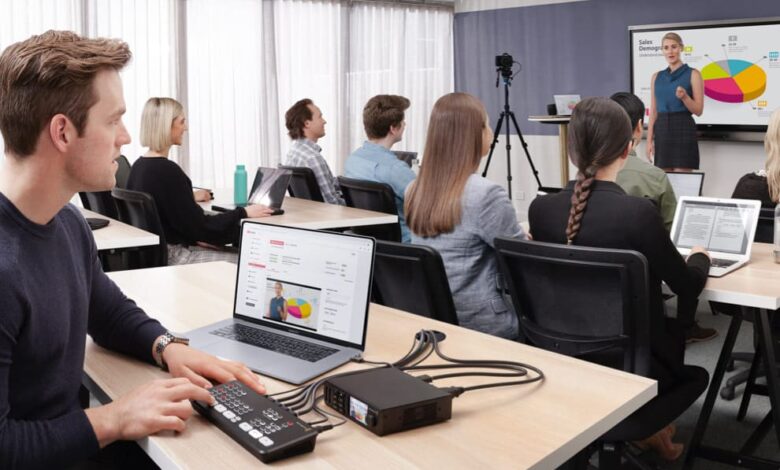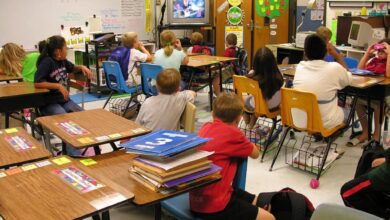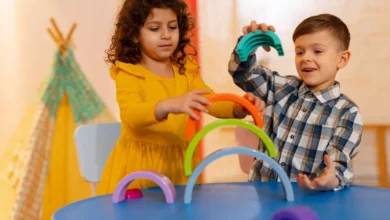Classroom 15x: Transforming Modern Education

Imagine a classroom where every student has access to tailored lessons, interactive tools, and real-time feedback, all powered by cutting-edge technology. This is the promise of Classroom 15x, a transformative approach to education that’s reshaping how students learn and teachers teach. Unlike traditional classrooms bound by chalkboards and rigid schedules, Classroom 15x leverages advanced digital platforms to create dynamic, engaging, and personalized learning experiences. It’s not just a buzzword; it’s a movement that’s gaining traction in schools and institutions worldwide, aiming to make education more accessible, inclusive, and effective. In this article, we’ll dive into what Classroom 15x is, how it works, and why it’s poised to redefine the future of learning.
Table of contents
What is Classroom 15x?
Classroom 15x is a concept rooted in the integration of technology to amplify the learning experience by a factor of fifteen—hence the “15x” moniker. It’s not about replacing teachers or traditional methods but enhancing them with digital tools that make education more adaptive and student-centered. Think of it as a supercharged classroom where artificial intelligence, virtual reality, and data analytics work together to create a seamless learning environment. This model prioritizes flexibility, allowing students to learn at their own pace, while providing educators with insights to better support each learner.
The term “15x” doesn’t refer to a specific product or platform but rather a philosophy of exponential improvement in education. It draws inspiration from advancements in edtech, where tools like learning management systems (LMS), interactive apps, and virtual classrooms converge to create a holistic experience. Schools adopting this approach often use a combination of software and hardware—think tablets, smartboards, and cloud-based platforms—to deliver lessons that are engaging and tailored to individual needs.
The Core Components of Classroom 15x
At its heart, Classroom 15x is built on several key pillars that work together to enhance the educational experience. The first is personalization. By using data-driven insights, platforms within the Classroom 15x framework can analyze a student’s strengths, weaknesses, and learning style to deliver customized content. For instance, a student struggling with algebra might receive targeted exercises, while another excelling in the subject could be challenged with advanced problems.
Another critical component is interactivity. Gone are the days of passive learning where students sit quietly while a teacher lectures. Classroom 15x incorporates gamification, simulations, and collaborative tools to make learning hands-on. Imagine a history lesson where students explore ancient Rome through a virtual reality headset or a science class where they conduct virtual experiments. These immersive experiences make abstract concepts tangible and memorable.
Accessibility is also a cornerstone. Classroom 15x aims to break down barriers to education by providing resources that can be accessed anytime, anywhere. Whether a student is in a rural area with limited resources or a bustling city, cloud-based platforms ensure they have access to high-quality materials. This democratization of education is particularly impactful for underserved communities, where access to traditional resources may be limited.
The Role of Teachers in Classroom 15x
Teachers remain the backbone of this model, but their role evolves significantly. Instead of being the sole source of knowledge, they become facilitators, guiding students through their learning journeys. With real-time data from digital platforms, educators can identify which students need extra support and which are ready for more challenging material. This allows for more meaningful one-on-one interactions, even in larger classrooms.
Professional development is also a key aspect. Teachers adopting Classroom 15x often undergo training to effectively use new tools, from mastering learning management systems to integrating virtual reality into lessons. This shift empowers educators to focus on what they do best: inspiring and mentoring students, while technology handles repetitive tasks like grading or tracking progress.
The Technology Behind Classroom 15x
The tech stack powering Classroom 15x is both sophisticated and diverse. Learning management systems like Canvas or Moodle serve as the backbone, organizing content and tracking student progress. Artificial intelligence plays a pivotal role, with algorithms analyzing student performance to suggest personalized learning paths. For example, platforms like Khan Academy or Duolingo use AI to adapt lessons in real time, ensuring students stay engaged and challenged.
Virtual and augmented reality are also game-changers. Tools like Google Expeditions allow students to take virtual field trips, exploring everything from coral reefs to distant planets. Meanwhile, gamified platforms like Classcraft turn learning into an adventure, rewarding students for completing tasks and collaborating with peers. These tools don’t just make learning fun; they foster critical thinking and problem-solving skills.
Connectivity is another crucial element. High-speed internet and cloud-based platforms ensure that resources are accessible on any device, whether it’s a laptop, tablet, or smartphone. This flexibility is especially important in hybrid learning environments, where students might alternate between in-person and remote classes.
Challenges and Considerations
While Classroom 15x holds immense promise, it’s not without challenges. One major hurdle is the digital divide. Not all students have access to reliable internet or devices, which can exacerbate educational inequalities. Schools implementing this model must prioritize equitable access, whether through subsidized devices or community Wi-Fi initiatives.
Another concern is teacher readiness. Transitioning to a tech-heavy classroom requires significant training, and not all educators are comfortable with rapid technological change. Schools must invest in ongoing professional development to ensure teachers feel confident and supported.
Data privacy is also a critical issue. With platforms collecting vast amounts of student data, schools must ensure compliance with regulations like FERPA (Family Educational Rights and Privacy Act) in the U.S. or GDPR in Europe. Transparent policies and robust cybersecurity measures are essential to protect student information.
The Impact on Students and Educators
The benefits of Classroom 15x are profound for both students and educators. For students, the personalized approach fosters a love for learning. They’re no longer forced to move at the same pace as their peers, which reduces frustration and boosts confidence. Interactive tools make lessons more engaging, helping students retain information longer.
For educators, Classroom 15x frees up time for meaningful interactions. Automated grading and analytics allow teachers to focus on mentoring rather than administrative tasks. This shift can lead to greater job satisfaction and more impactful teaching.
Moreover, the model supports lifelong learning. By teaching students how to navigate digital tools and think critically, Classroom 15x prepares them for a world where adaptability and tech literacy are essential. Whether they pursue careers in STEM, the arts, or business, these skills will serve them well.
Real-World Examples
Schools around the globe are already embracing elements of Classroom 15x. In Finland, known for its progressive education system, schools use digital platforms to create flexible, student-centered curricula. In the U.S., districts like those in California and New York are piloting virtual reality programs to enhance STEM education. Even in developing nations, initiatives like One Laptop Per Child are bringing tech-driven learning to remote areas, aligning with the Classroom 15x ethos.
These examples show that the model is adaptable to different contexts. Whether in a high-tech urban school or a resource-scarce rural one, the principles of personalization, interactivity, and accessibility can be applied to improve outcomes.
The Future of Classroom 15x
As technology continues to evolve, so will Classroom 15x. Advances in AI could lead to even more sophisticated personalization, with algorithms predicting not just what a student needs to learn but how they’ll best absorb it. Virtual reality could become more immersive, allowing students to interact with historical figures or conduct complex experiments in safe, virtual environments.
The rise of 5G and improved internet infrastructure will further enhance accessibility, making high-quality education available to more people. Meanwhile, ongoing research in pedagogy will refine how these tools are integrated, ensuring they complement rather than overshadow traditional teaching methods.
You also like Banggiadag
Conclusion
Classroom 15x is more than a trend; it’s a glimpse into the future of education. By harnessing technology to create personalized, interactive, and accessible learning experiences, it empowers students and educators alike. While challenges like the digital divide and teacher readiness remain, the potential to transform education is undeniable. As schools continue to adopt this model, they’re not just preparing students for exams but for a world that demands adaptability, creativity, and tech-savvy problem-solving. The classroom of tomorrow is here, and it’s 15 times more exciting than ever before.
FAQs
What makes Classroom 15x different from traditional education?
Classroom 15x uses technology to personalize learning, making it more interactive and accessible. Unlike traditional methods that often follow a one-size-fits-all approach, it tailors content to individual student needs, using tools like AI and virtual reality to enhance engagement.
Do teachers still play a role in Classroom 15x?
Absolutely. Teachers are central to Classroom 15x, acting as facilitators who guide students through personalized learning paths. Technology handles repetitive tasks, allowing educators to focus on mentoring and inspiring students.
How can schools address the digital divide in implementing Classroom 15x?
Schools can tackle the digital divide by providing subsidized devices, partnering with community organizations for Wi-Fi access, and advocating for government funding to ensure all students have the tools they need.
Is Classroom 15x suitable for all age groups?
Yes, the principles of Classroom 15x can be adapted for any age, from elementary students to adult learners. The key is tailoring the technology and content to suit the developmental stage and learning goals of the students.
What kind of training do teachers need for Classroom 15x?
Teachers need training in using digital platforms, integrating tools like virtual reality, and interpreting data analytics. Ongoing professional development ensures they stay confident and effective in this tech-driven environment.
How does Classroom 15x ensure student data privacy?
Schools must implement robust cybersecurity measures and comply with regulations like FERPA or GDPR. Transparent policies and secure platforms are critical to protecting student information in Classroom 15x.





